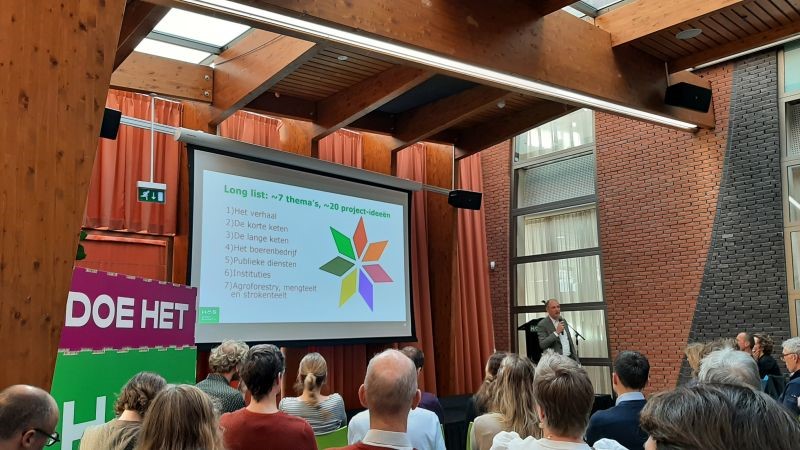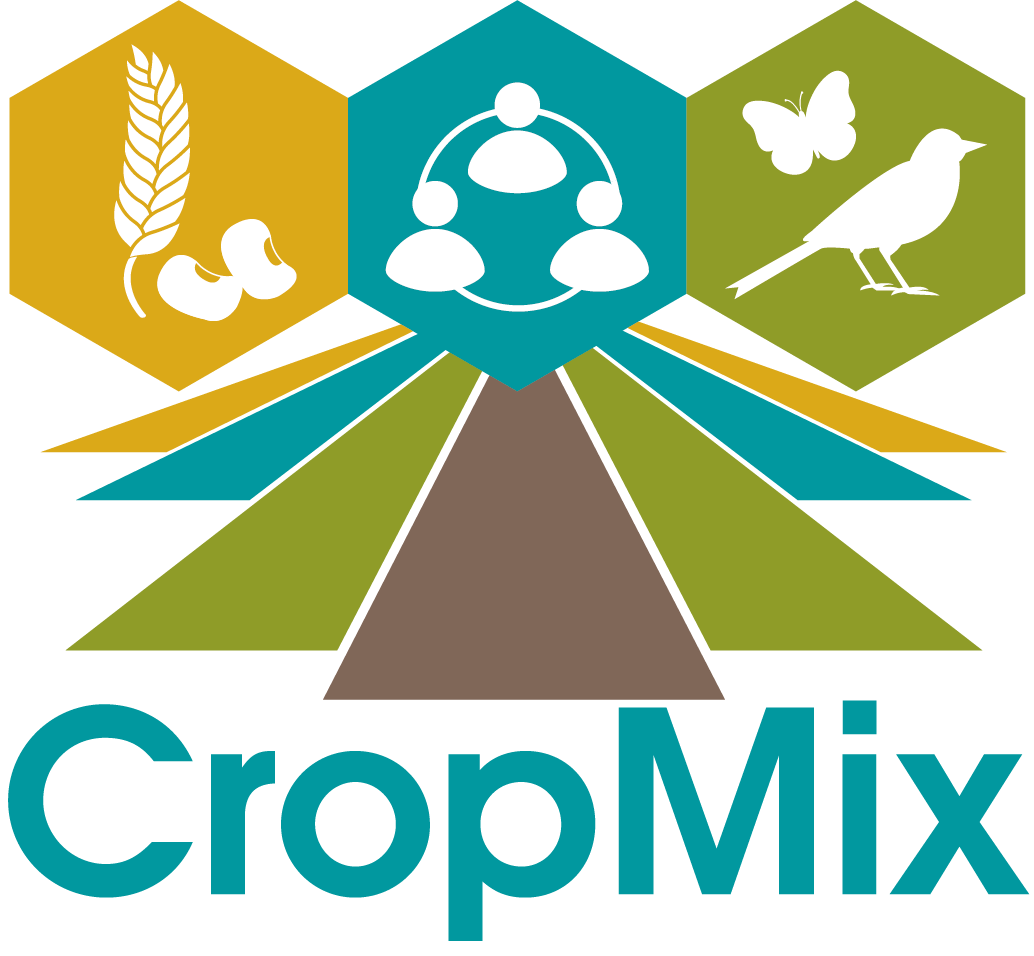In the living labs, our CropMix-consortium works collectively on the broader question of how to make sustainability and arable farming more compatible. We do this in collaboration with farmers, practice partners and researchers. The Living Labs can thus be seen as a co-creation platform, addressing the questions that live in practice and that individual researchers cannot solve on their own.
What are living labs?
Living Labs are living living living labs in which we experiment together. Depending on the type of question it tries to answer, a Living Lab can be a physical place, a network or a collaborative venture. Within a Living Lab activity, farmers, practice partners and researchers, with support from transition researchers from HAS Green Academy, work together on a societal problem to solve it practically and effectively. Multiple activities of this kind side by side ultimately contribute to the development of one or more transition paths to make sustainability and arable farming more unified.
During our consortium meeting on 23 November at HAS Green Academy, the outlines of several living labs appeared, in which partners will work together.

Designing the living labs
Our first year has been dominated by the design of the Living Labs. What do we actually want to achieve? In other words, what is the ambition of the Living Labs? Spoiler: To facilitate the transition to a more sustainable farming system by making the adoption of mixed cropping systems easier.
Ambition alone is not enough to actually achieve an increase in mixed cropping systems. We also need to take steps to get there. But which ones? We tried to find this out in a series of interviews with every farmer and every practice partner. It led to some 20 topics that need more attention.
These first 20 topics serve as the basis for the first Living Lab activities. The aim of such an activity is to engage in a collaborative effort between relevant participants of the CropMix consortium to tackle the topic, identify a solution direction and, through an experiment, jointly find out what works and what does not work.
At the same time, these activities are not separate. Indeed, each Living Lab activity can influence other activities, research projects or directly affect the agricultural system. Together, Living Lab activities can provide direction and reveal the contours of a transition path, especially if activities build on each other.
The first living lab activities
On the 23rd of November, 2023, the officiële kick-off van de Living Labs took place. Together with the consortium, we discussed the 20 topics, designed concrete activities for them and consortium partners expressed their desire to be part of the various teams that will realise these activities. For each topic, we discussed the question: what activities can we undertake to overcome the challenge?
For nine topics, concrete activities emerged directly from this. We will work on these nine concrete activities in 2024. The remaining topics, and new topics that will arise in the Living Labs, will be dealt with at a later stage.
In random order, these are the nine living lab activities:
1) CropMix and catering business
We explore possible short-chain collaborations. Strip cropping farmers often realise less production volume per crop, making sales a little more difficult. Catering companies, on the other hand, more often need somewhat smaller volumes, ideally produced locally. How would it be if both parties know how to find each other? The aim is to set up a pilot in a region.
2) Public reward for mixed cropping
Governments need to address rural challenges such as nitrogen and biodiversity. Farmers, and specifically sustainable farmers, can contribute to this. In this project, we investigate the goals that governments have, the effects that mixed cultivation systems have on these goals and what rewards can be offered in return.
3) The role of advisors
Consultants who visit arable farmers do not simply give the advice to switch to mixed cropping systems. They need to know the whole story, the pros and cons. This project revolves around developing a fact sheet on strip cropping. The aim is to get the honest story of the cropping system clear in one overview.
4) Pixel farming in vegetable gardens
Much is still unclear about different crop combinations. Meanwhile, we have the citizen science project MoestuinMix , in which vegetable gardeners test different crop combinations and report on the effects. We will take a firmer approach to this project to learn more about pixel farming. An important question is how to ensure that both CropMix and individual kitchen gardeners learn valuable lessons from the project.
5) RVO administration
One disadvantage of mixed cropping systems compared to conventional arable farming is the extra administrative operations it entails. You have to register many more plots. RVO is looking at its own instruments and whether they still make sense. Together with the RVO and arable farmers, we are investigating where the bottlenecks are and how we can solve them to ease the administrative burden.
6) Residu thresholds
When drift occurs when pesticides are applied in strip crops, there is a good chance that the pesticide will end up on a crop on which it is not allowed. Currently, the entire crop may then not be sold. In this project, we want to get round the table with the NVWA and the CTGB to investigate, scientifically substantiated, whether a new innovative residue threshold is possible.
7) Machinery
What will the machinery look like that will be needed within mixed cropping systems ten years from now? That question is at the heart of this project. First of all, we start with irrigation. With the combined expertise of arable farmers and creativity of students from MBO and HBO institutions, the aim is to come up with innovative solution directions that can give direction to developers of the technologies.
This connects to PhD research on technological readiness.
8) Biocontrol
Pests can be controlled in several ways. One of the options often used in greenhouse farming is the use of biocontrol. The aim of this project is to spread the word to anyone who wants to know, but above all to farmers and researchers, that natural pest control also works in field mixed cropping systems. We do this by bringing knowledge to farmers with a knowledge network. For this purpose PhD research on biocontrol forms the base.
9) Pesticide use and the cropping plan
Sometimes, you use crop protection products that work very well on crop A, while they are not allowed on crop B. It is then not convenient for strip cropping farmers to have a crop plan in which these two crops are side by side. In this project, we will work with students to find out which crop-pesticide combinations are not possible and how this inventory can be translated into a cropping plan.


